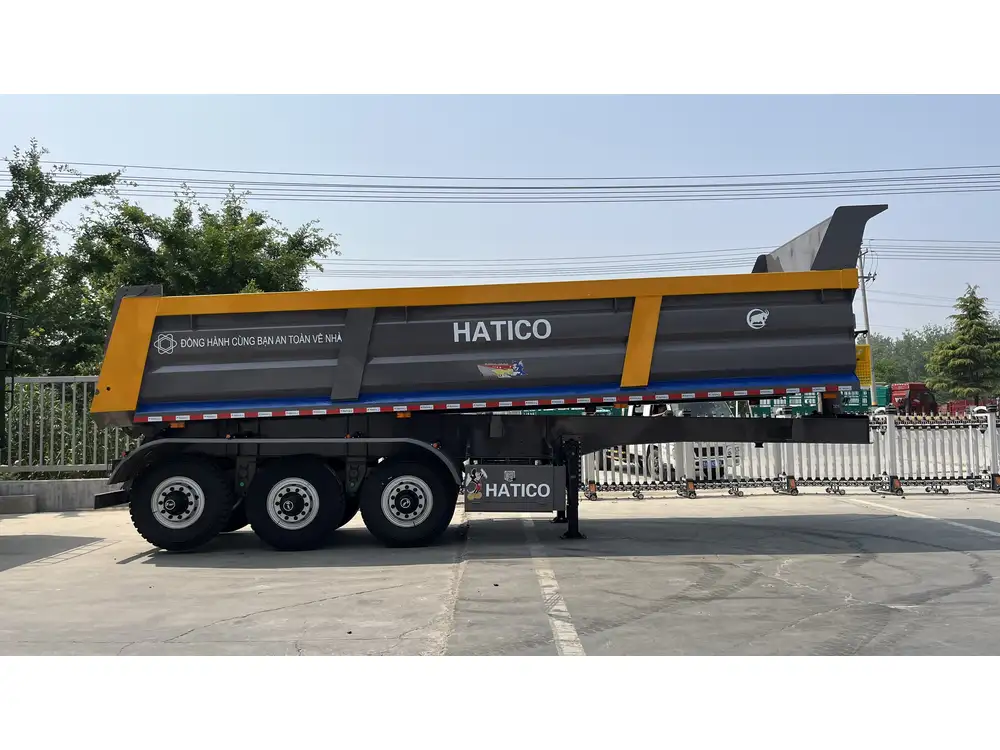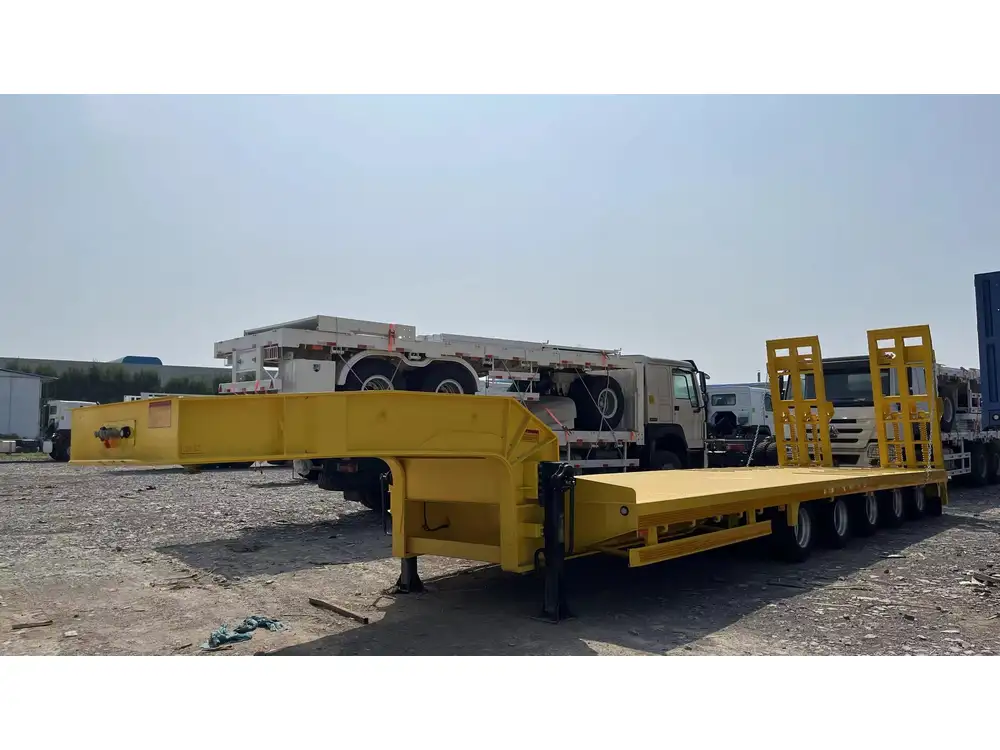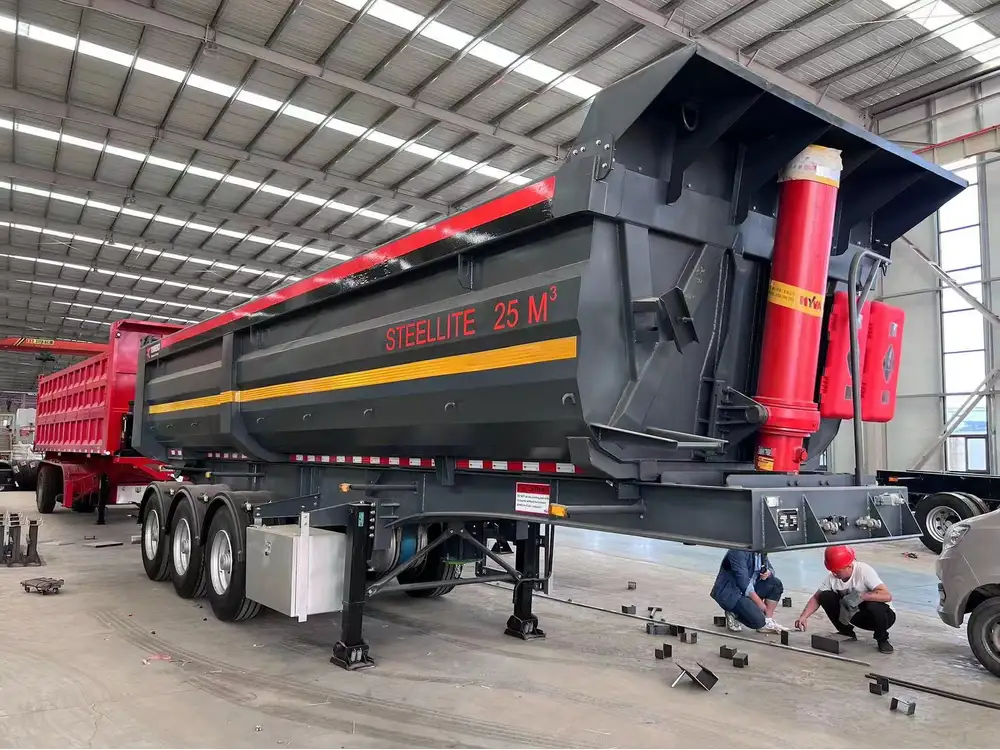In the realm of transportation and logistics, the concept of turnover ratio serves as a pivotal metric for manufacturing and operational efficiency. As a manufacturer of semi-trailers, it’s essential to dissect the intricacies of turnover ratios, particularly concerning flatbeds versus traditional trailers. This article delves into the specifics of turnover ratios, how they are calculated, and what factors influence them, offering a well-rounded perspective for stakeholders in the industry.
What is Turnover Ratio?
The turnover ratio, often expressed as the number of times an asset is utilized over a specific period, serves as an essential performance indicator. Specifically, in the context of flatbeds and trailers, it reflects how efficiently these assets are being used to generate revenue.
Simply put, a higher turnover ratio implies greater efficiency in asset utilization, leading to increased revenue opportunities for manufacturers and fleet operators alike. Understanding this metric is crucial for making informed decisions related to fleet management and resource allocation.
Calculating the Turnover Ratio
The turnover ratio can be calculated using the following formula:
[ \text{Turnover Ratio} = \frac{\text{Total Revenue}}{\text{Average Asset Value}} ]Where:
- Total Revenue refers to the income generated from transporting goods using either flatbeds or trailers within a specified timeframe.
- Average Asset Value is derived from the initial purchase price of the asset less depreciation over the same period.

Example Calculation
To elucidate this concept further, consider the following hypothetical example:
| Asset Type | Total Revenue (Annual) | Average Asset Value | Turnover Ratio |
|---|---|---|---|
| Flatbed | $500,000 | $100,000 | 5 |
| Trailer | $600,000 | $150,000 | 4 |
In this table, the flatbed achieved a turnover ratio of 5, indicating that it generated five times its average value in revenue, whereas the trailer achieved a turnover ratio of 4.
Factors Influencing Turnover Ratios
Several elements can affect the turnover ratio of flatbeds compared to trailers. Understanding these factors can help manufacturers and operators optimize their asset usage and improve overall operational efficiency.
1. Type of Cargo
The type of cargo being transported significantly influences the choice between flatbeds and traditional trailers. Flatbed trailers are generally preferred for oversized, heavy, or irregular-shaped loads, while enclosed trailers cater to standard shipments. Consequently, the nature of the freight will determine turnover efficiency, as certain loads can be delivered more efficiently on specific trailer types.

2. Frequency of Deliveries
The frequency and regularity of deliveries also play a critical role in turnover ratios. A fleet that optimizes its route planning and minimizes downtime will undoubtedly see improved turnover ratios. For example, flatbeds, being more accessible for loading and unloading, can see higher frequency in deliveries compared to trailers which might require additional handling.
3. Market Demand
Fluctuating market demands can also impact turnover ratios. In peak seasons, higher demand can lead to increased utilization of assets, boosting turnover ratios for both flatbeds and trailers. Conversely, during off-peak periods, these ratios may diminish as assets sit idle, underscoring the need for strategic planning and market analysis.
4. Operational Efficiency
Operational efficiency, including the maintenance of equipment and logistical processes, is paramount in determining turnover ratios. Well-maintained trailers and time-efficient loading/unloading processes can significantly enhance the speed of operations, thus increasing turnover ratios.
| Factor | Effect on Turnover Ratio |
|---|---|
| Type of Cargo | Varies by asset efficiency and fit |
| Frequency of Deliveries | Higher frequency boosts ratios |
| Market Demand | Peaks increase utilization |
| Operational Efficiency | Maintenance improves turnover |

Advantages of Flatbeds
Flatbed semi-trailers offer several advantages that could influence turnover ratios favorably:
1. Versatility
Flatbeds are inherently versatile, capable of accommodating various types of cargo—from construction materials to heavy machinery—making them invaluable in industries reliant on diverse freight.
2. Quick Loading and Unloading
The open design of flatbeds allows for quicker loading and unloading processes, minimizing turnaround times and enhancing operational efficiency. The less time drivers spend at loading docks, the more deliveries can be completed, resulting in higher turnover ratios.

3. Accessibility
With no sides, flatbeds are suitable for loads of any shape or size, and cranes or forklifts can easily access the cargo from multiple points, reducing handling time significantly.
Drawbacks of Flatbeds
While flatbeds have their advantages, potential drawbacks must also be considered when evaluating turnover ratios:
1. Exposure to Elements
Flatbeds expose cargo to weather conditions, which can necessitate additional protective measures, especially for sensitive materials. This may lead to increased delivery time and affect turnover ratios negatively.

2. Limited Security
Since flatbeds lack sides and roofs, securing cargo can be more challenging, potentially leading to spoilage or loss. Operators may need to allocate more resources toward security measures, which could impact overall efficiency and turnover.
Advantages of Enclosed Trailers
Enclosed trailers exhibit their own set of strengths when compared to flatbeds, especially concerning turnover ratio dynamics:
1. Cargo Protection
Enclosed trailers shield cargo from weather and environmental hazards, ensuring it arrives in prime condition. This reliability can translate into customer satisfaction and repeat business, ultimately enhancing revenue.

2. Security
The enclosed design provides an added layer of security, reducing theft risks and damage. Higher security can lead to lower insurance premiums and minimized financial losses, positively influencing overall profitability.
Drawbacks of Enclosed Trailers
Nevertheless, there are challenges associated with enclosed trailers that may limit turnover ratios:
1. Longer Loading Times
Loading and unloading enclosed trailers may take longer due to their design, potentially resulting in increased dwell times at loading docks. This extended duration can impact how frequently deliveries are accomplished.

2. Higher Operational Costs
Enclosed trailers often come with higher initial costs and maintenance requirements, which can impede maximum asset utilization and dilute turnover ratios over time.
| Aspect | Flatbed Advantage | Trailer Advantage |
|---|---|---|
| Cargo Type | Versatile | Specialized protection |
| Loading/Unloading Time | Quick loading | Secure and stable |
| Security | Less secure | More secure |
| Weather Protection | Limited | Comprehensive weather protection |
Strategies to Enhance Turnover Ratios
For both flatbeds and trailers, certain strategies can be implemented to leverage resources effectively and optimize turnover ratios.
1. Route Optimization
Utilizing advanced route planning software can help streamline trips, ensuring maximum efficiency in fuel consumption and time management. This leads to improved turnover as more deliveries can be fulfilled within a given period.

2. Better Fleet Management
Regular maintenance checks reduce the risk of unexpected downtimes. Maintaining a well-orchestrated fleet management strategy can enhance the lifespan of assets, allowing for continuous and effective utilization.
3. Training Drivers
Investing in driver training programs enhances the operational efficiency of the fleet. Educated drivers promote faster loading/unloading and efficient driving practices, all of which contribute to better turnover ratios.
4. Diversifying Cargo Offerings
Offering a diverse array of services could lead to increased demand, maximizing the use of both flatbeds and trailers. This adaptability ensures that your fleet can respond proactively to shifting market demands, further boosting turnover ratios.

Conclusion: Making Informed Decisions
When pitted against each other, flatbeds exhibit distinctly favorable turnover ratios in scenarios that prioritize fast loading and unloading, efficiency in size-handling, and varied cargo types. However, enclosed trailers present undeniable advantages in terms of cargo protection and security.
By understanding the complexities and influences of turnover ratios, manufacturers and operators can make informed decisions tailored to their specific operational needs and market positions. Continuous evaluation and modification of strategies will ensure optimal performance, allowing for sustained growth in a competitive industry. Commitment to addressing these factors while maintaining a focus on enhancing operational efficiency will yield higher turnover ratios and, ultimately, increased profitability.



